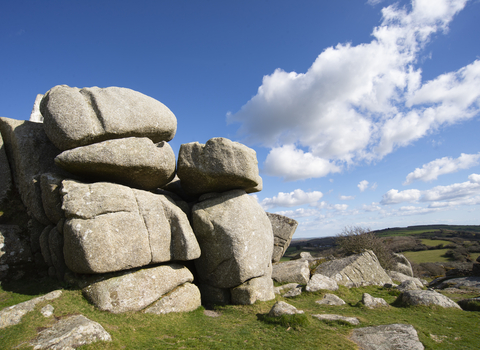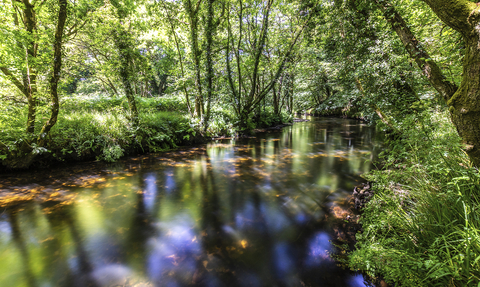
Cornwall Wildlife Trust's Devichoys Woods Nature Reserve in Autumn. Image by Ben Watkins
Cornwall Nature Reserves Fund
Nature in Cornwall is in serious trouble and wildlife is declining at a shocking rate. While around 75% of Cornwall’s land is used for agriculture, and 8% is urban or used for transport, the best sites for wildlife are too limited in number and size. They are also disconnected from one another with the result that there are not enough corridors for wildlife to flourish.
Cornwall is losing important species all too quickly, and there is evidence that this decline is accelerating. 12% of species of ‘Principal Importance’ (those listed in the 2006 Natural Environment and Rural Communities Act) are threatened with local extinction or complete loss from Cornwall. The alarming truth is that almost a quarter of all terrestrial mammals and butterfly species are threatened.

Adrian Langdon
Bigger, better, more joined up
Bigger and better wildlife sites are needed – and they must be more joined up with one another. The bigger a site is for wildlife, the more it gives habitats and species opportunities to expand. It gives them more protection. They also need to be better: the habitat must be as good as it possibly can be. Finally, they have to be joined up through the enhanced connections of wildlife corridors. In short, we need to create a joined up network for bigger and better wildlife sites.
Your donation to the Cornwall Nature Reserves Fund will help manage our existing nature reserves and purchase more land for nature. By supporting vital work on our reserves and increasing their size, you can help protect precious habitats and species which rely on them. Each day, Cornwall Wildlife Trust staff and volunteers are working on the ground on our reserves to create a Cornwall where nature thrives.
Andy Collins, Mid-Cornwall Reserves Manager

River Fowey from Cornwall Wildlife Trust's Cabilla & Redrice Wood nature reserve. Image by Ben Watkins
Cornwall Nature Reserves Fund
Cornwall Wildlife Trust manages over 5,500 acres of land across 59 nature reserves throughout Cornwall. Many contain rare and important habitats for wildlife and carbon capture, helping tackle the climate and ecological crisis we face. We are constantly working to improve the conditions on these reserves to make them even better for wildlife. Where possible, we also aim to increase the size of our reserves, as we have done recently at our largest nature reserve, Helman Tor, near Bodmin. The purchase of an additional 97 acres next to this site is enabling us to introduce rewilding principles at this nature reserve, meaning nature can begin to take the lead.
In a different part of Cornwall, Bartinney is a beautiful hillside site in Penwith, consisting predominantly of grassland, ponds and heathland habitats. It is a particularly important place for birdlife, including the short-eared owl, cuckoo, stonechat, linnet, skylark, snipe and woodcock. Bartinney also provides a home to various other wildlife associated with heathland, including adders and butterflies, such as the grayling, wall, small pearl bordered fritillary and small heath.






